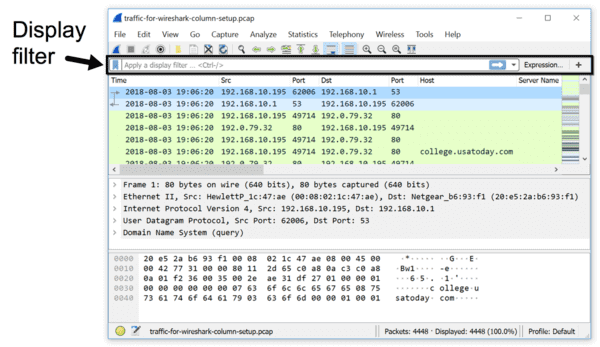

Note that you might be tempted to use a simpler filter such as: ip.addr=32 & ip.addr=98 This filter also avoids any potential problems with whether name resolution is enabled or not, as ip.host isn't necessarily guaranteed to match "\.152$" if name resolution is enabled. The filter uses the slice operator to isolate the 1st and 4th bytes of the source and destination IP address fields. Those values, 32 and 98 are hexadecimal values for 50 and 152, respectively. You can also learn to Master Wireshark in Five Days or Start Using Wireshark to Hack Like a Pro with our VIP courses.Try this filter instead: (ip.src=32 & ip.src=98) || (ip.dst=32 & ip.dst=98) We hope that with the knowledge and techniques covered in this Wireshark cheat sheet, you should now be able to confidently capture, filter, and analyze packets with Wireshark. It provides a wealth of information that can help you identify issues, track down problems, and understand how your network is being used. Wireshark is an incredibly powerful tool for analyzing and troubleshooting network traffic. Resize columns, so the content fits the width Zoom out of the packet data (decrease the font size) Zoom into the packet data (increase the font size) Opens “File open” dialog box to load a capture for viewingĪuto scroll packet list during live capture Uses the same packet capturing options as the previous session, or uses defaults if no options were set Protocol used in the Ethernet frame, IP packet, or TC segmentĮither all or one of the conditions should matchĮxclusive alterations – only one of the two conditions should match not bothįiltering Packets (Display Filters) Operator

Source address, commonly an IPv4, IPv6 or Ethernet address Frequently Asked Questions Default Columns In a Packet Capture Output Nameįrame number from the beginning of the packet capture.Keyboard Shortcuts – Main Display Window.Default Columns In a Packet Capture Output.


 0 kommentar(er)
0 kommentar(er)
